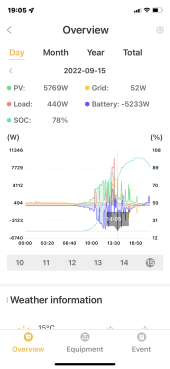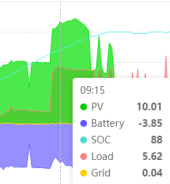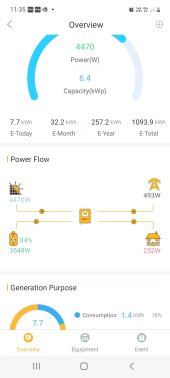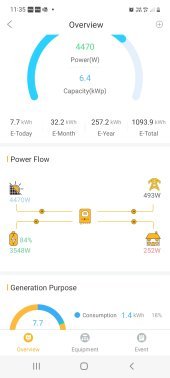First pic:
4.03 kW PV, of which:
0.01 from battery
1.27 to load
2.33 to grid
So the full 3.6 kW to grid and load, battery is just sitting fully charged while there would appear to be a 15% loss of panel output in the system. That's a lot of loss, so much that I'd possibly consider that (partly) a measurement timing error. Hard to say as I am not familiar with exactly what those charts are showing (e.g. momentary snapshots, or averages over an interval, or a mix of both).
Second pic:
4470 W of PV, of which:
3548 to battery
252 to load
493 to grid
So system losses of about 10% of PV output. Again if that is snapshot data it might be just a timing thing rather than actual losses.
Or measurement error.
In any case, the inverter is now showing it is capable of supplying 3.6 kW AC to loads + additional capacity to the battery. It's also showing priority of PV supply being to i. loads, ii. battery, iii. grid. Glad to read it is performing as it should.







